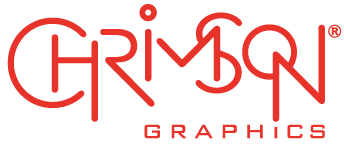A design for life, part 2
The bits that followed
One evening in the autumn of 1980, my dad brought home something which flipped my mind — a Letraset catalogue, full of alphabets set out in different styles with exotic-sounding names like ‘Pump Triline’ and ‘Magnificat’. What exciting new world was this?
Beyond the directory of typefaces and symbols were photos of a pristine studio in some faraway European capital, where white-shirted designers ‘burnished’ transfers or ‘laid down’ a marker wash. Maybe I could do that?
I had hitherto been unaware that everything everywhere — books, crisp packets, magazines, logos — had been designed by someone. But of course they had — this was Graphic Design! Commercial Art! The Glamour!
“The way can’t be taught; the way must be found.” — Anon
As my days at school were coming to an end, a lot of time was spent just painting imaginary landscapes, practising hand-lettering and drawing cartoons to please myself.
A pile of artwork was amassed and so, by the summer of 1983, it was high time to present all of this to whoever might show an interest. With the kind help of a distant relative, Roland Johnson, who was once a graphic designer himself, into the Yellow Pages I went and, with his recommendations of design companies in the city, I wrote letters.
The first to respond, the highly-respected Design Group, requested an informal chat over a coffee — oh and bring the portfolio. I was terrified, but out of that meeting came full-time occupation — a job in Graphic Design, right where I wanted to be — I had found the way.
The point of pride here was being guided by professionals from the outset, learning fast through working to tight deadlines. This, along with much ‘in-at-the-deep-end’ practice and self-imposed ‘homework’, smoothed out most of the rough edges. I made a squillion mistakes and had to adapt to working far more quickly, etc, but what an intense, satisfying environment in which to learn.
The then managing director of Design Group, a brilliant man called Sandy Weir, told me to “never lower your standards” — the most profound bit of work advice I ever received.
Return to A design for life, part 1 >
Footnote: The Letraset scenario described above of a staged, spotless Euro-studio with the obligatory indoor plants and fresh coffee gurgling away over there on the side is not quite how it was.
Ask any graphic artist who — in the dim days pre-Apple Mac — was forced to suffer in a studio noxious with spray mount, full ashtrays and bacon sandwiches, and the regular slicing-off of fingertips with a sharp blade at the cutting mat.
Nowadays, that the Mac is the tool-of-choice for most design purposes, the workplace provides a safer, cleaner and more efficient setting, with most of the in-studio hazards long gone — bacon sandwiches excepted.

